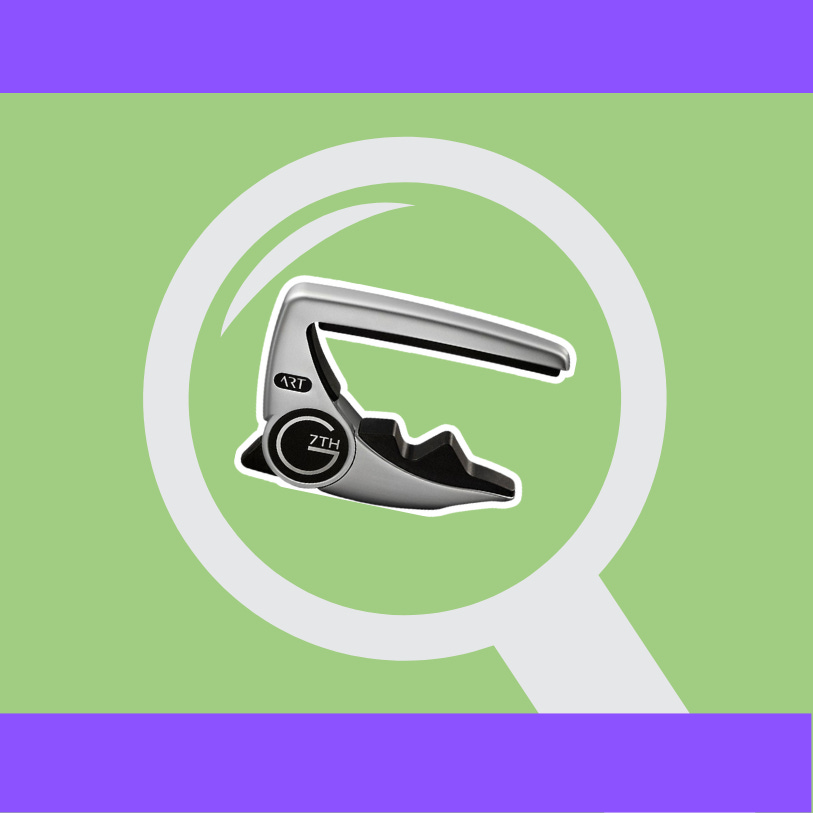Pro tip: please watch the short video version of this post that I link to www.guitarsuccess4u.com/CapoReality. It will give you a much clearer grasp of what I’m sharing here.
Abbreviated transcript and table included below…
If you play the guitar, you probably use a capo sometimes. But is your capo holding you hostage? Do you sometimes get confused about which key you’re actually in when you use it? No more!
We as guitarists make use of a variety of tools, but perhaps one of the most common is the capotasto, better known as the capo. The capo gets its name from a phrase that means “head tie,” which implies that it’s being tied to the guitar near the headstock.
But when we put a capo on our guitar, what is happening, exactly?
We’re shortening the length of the strings. This can allow us to play in some keys with open chord shapes to access actual chords that would normally all be bar chords.
Allow me to demonstrate (see the video for a clearer picture of this.) The key of Ab Major, for example, has zero open chords, so they all need to have 100% fretted notes.
The chords are: Ab Major, Bb minor, C minor, Db Major, Eb Major, F minor, G diminished, and we can come back around to Ab Major.
In the video, I play all of those chords again, but with my capo on fret 1. The chords are the same, but many of them are much easier to play, because I use the shapes: G Major, A minor, B minor, C Major, D Major, E minor, F sharp diminished, and ending on G Major.
But let’s not confuse shapes with chords.
Because unless we’re only collaborating with a drummer or a percussionist, there are harmonic consequences to everything we do with the capo. Do you believe it?
If you’re collaborating with a piano player, a synth player, a bass player, another guitar player, a vocalist, someone who plays strings or woodwinds, or any type of harmonic or melodic instrument or voice, they’re going to be playing or singing in a specific key.
And if you are the guitarist who’s leading that band, it’s super important to know which key you’re all in.
Here are some helpful tips so you can be sure of what’s going on.
Memorize marker points
First, memorize the bottom 3 strings, strings 6, 5 and 4.
I walk you through these markers in the video, but you’re welcome to reference the diagram I’m including with this article.
There’s more, but this can give us plenty to work with here.
Which key are we in?
Our first approach is to place the capo and discover which keys we end up playing in when we play shapes.
Let’s say I place the capo on the 3rd fret. If I strum shapes around the tonal center of E, with the open 6th string for the low root, which key am I in? G.
If I strum A shapes, which key am I in? C.
If I strum D shapes, which key am I in? F.
Why? Because the “open” notes at our new “nut” with the capo are G, C, and F. Right? Did you know all of those? This works best with your guitar and capo in hand.
Which key do we want to play in?
Let’s try the opposite approach with placing the capo for keys we want to play in.
Now, let’s say I want to play in Eb Major with a piano player, by leveraging the capo. For a moment, let’s temporarily call that the key of D#. It’s a theoretical key, I know, but go with me.
If I place the capo on fret 1 and play a D shape, it sounds a D#, better known as Eb. That open 4th string is our low root on Eb.
If you want to think in the key of D, this can work for you, but remember, you’re accountable for actually playing chords in the keys the capo has given you access to.
So if the capo is on fret 1, and we play D, G and A shapes, we’ve actually achieved Eb, Ab and Bb chords. Right?
Starting with chords that have open roots like E, A, and D can be pretty attainable, because the capo at the new “nut” easily tells us what those notes are, without fretting above it.
But what about chords like G and C that do have a fretted root? Don’t worry, I got you.
Play an open G chord for a moment. That root on the 3rd fret is a minor 3rd above the nut.
Let’s just make a new “nut” with the capo! Let’s say we want to play in the key of B. Well, a moment ago, we said that B on the 6th string is on fret 7. So, let’s fret the G shape that’s got that 7th fret B as the root, and place our capo down a minor 3rd – a distance of 3 frets, on the 4th fret.
With the capo on the 4th fret, using G shapes, we’ve accessed the key of B.
One more. Play an open C chord, the root for which is on the 3rd fret of the 5th string. It’s a minor 3rd above the open A note at the nut.
Let’s make a new “nut” with our capo for the key of F. Where is F on the 5th string? It’s all the way up at fret 8, just above the 7th fret E we talked about a moment ago.
So, we can start with a C shape with our root on the 8th fret for F, and go down 3 frets to the 5th fret and place the capo there.
We can now play C shapes, with capo 5, in the key of F.
This process works for any Major key, minor key, or even modes, but we have to know the real key we’re in, and at least some of the chords the capo is helping us play.
Our charts, especially the ones we print up for the band, have to reflect this reality.
Otherwise, we’ll have an alternate reality that leads to confusion, or at the very least, a comedy of errors.
I hope this was helpful, and I look forward to next time!













